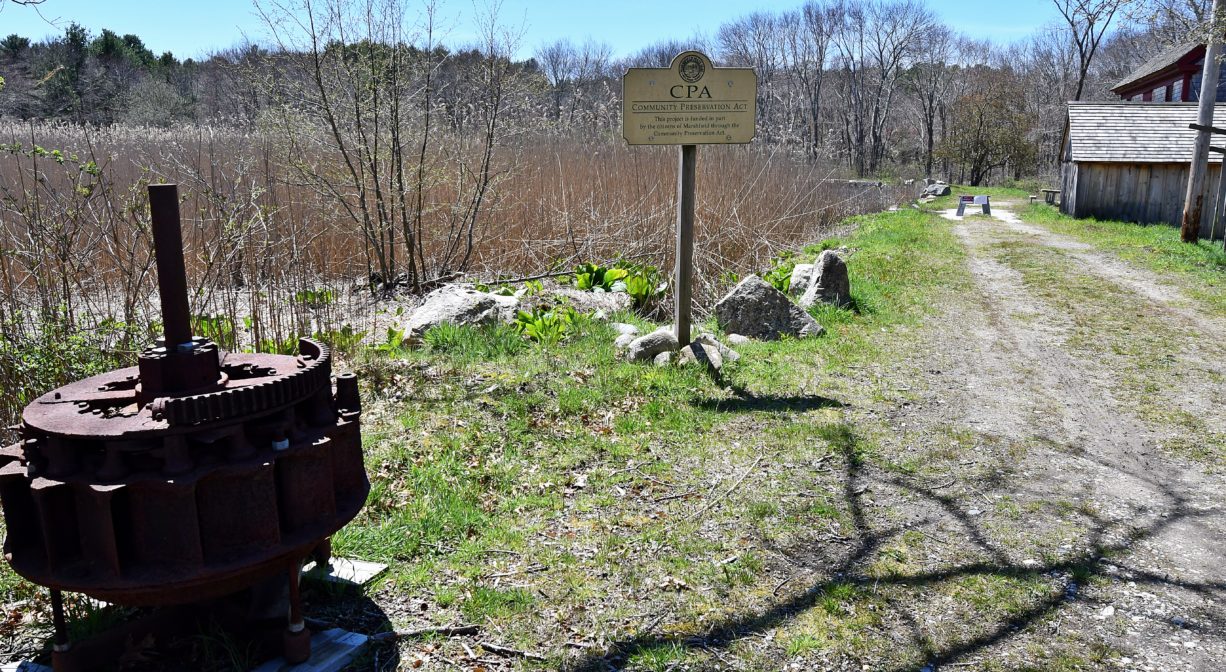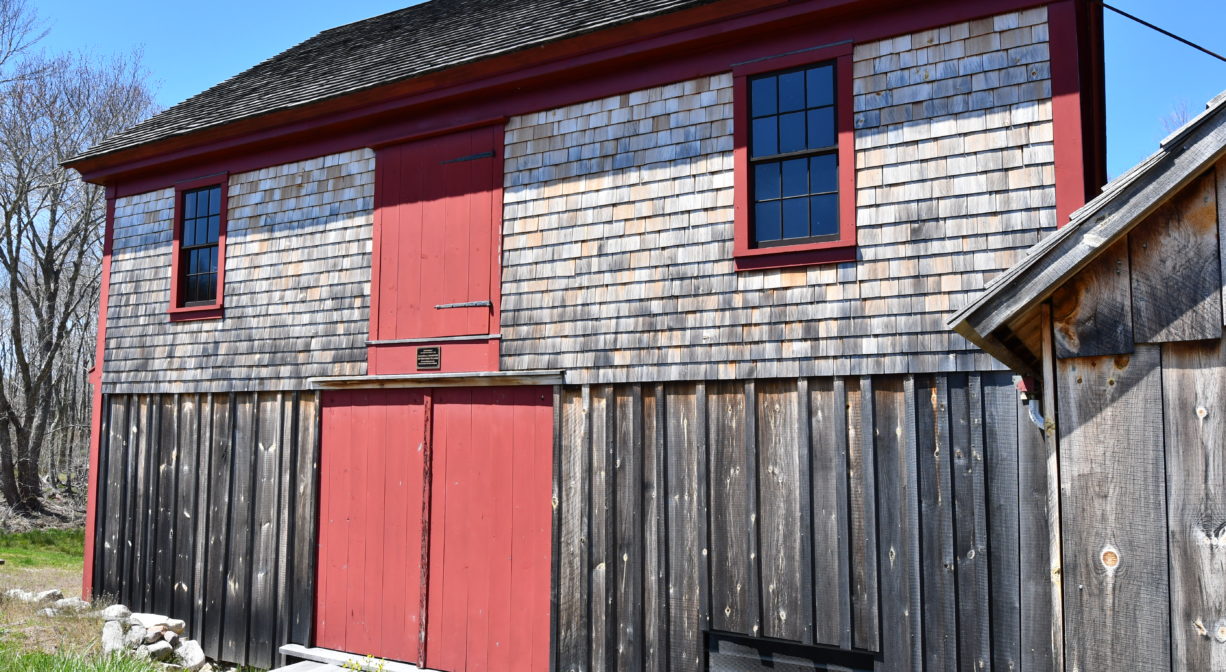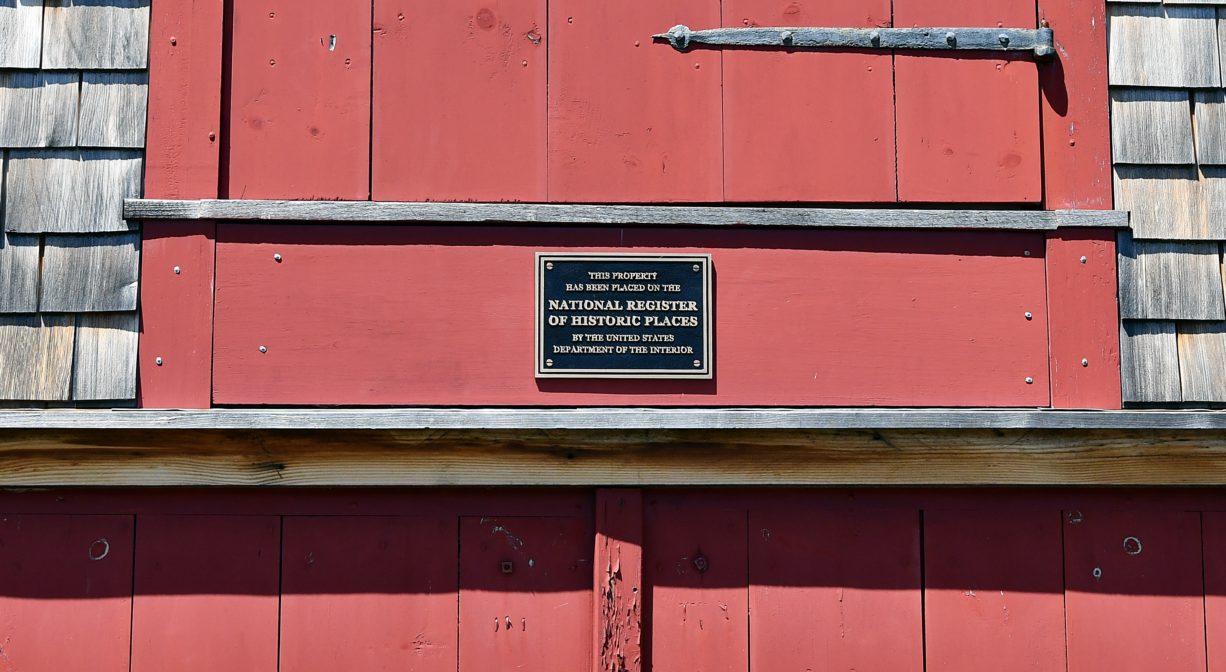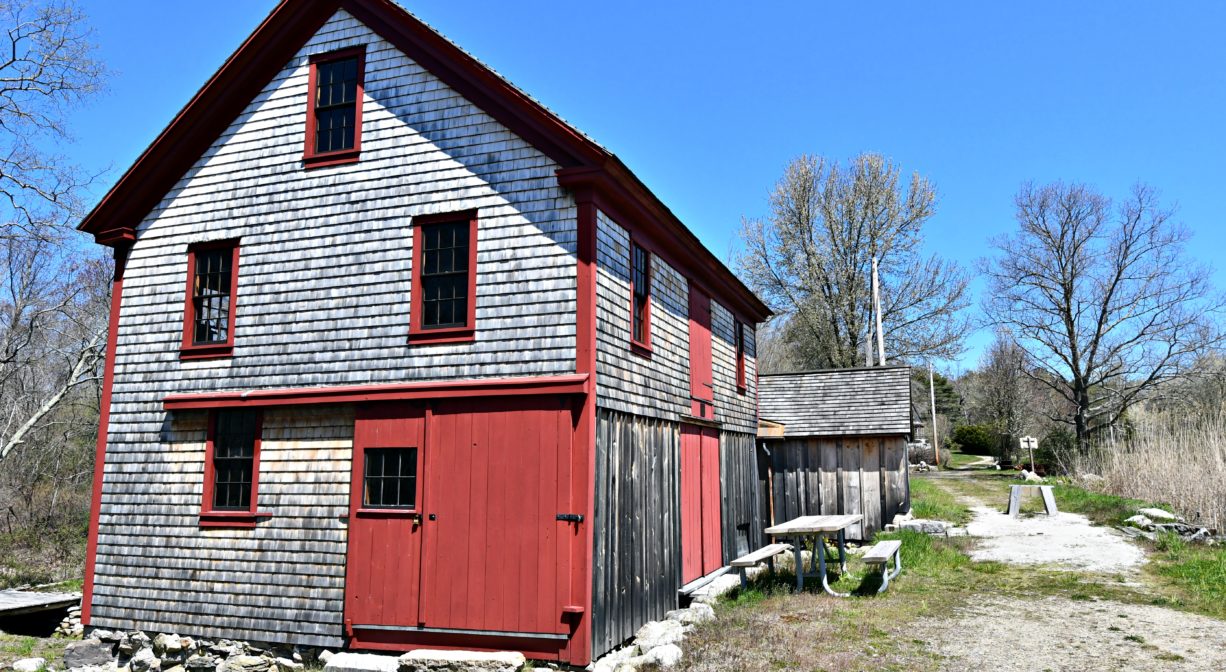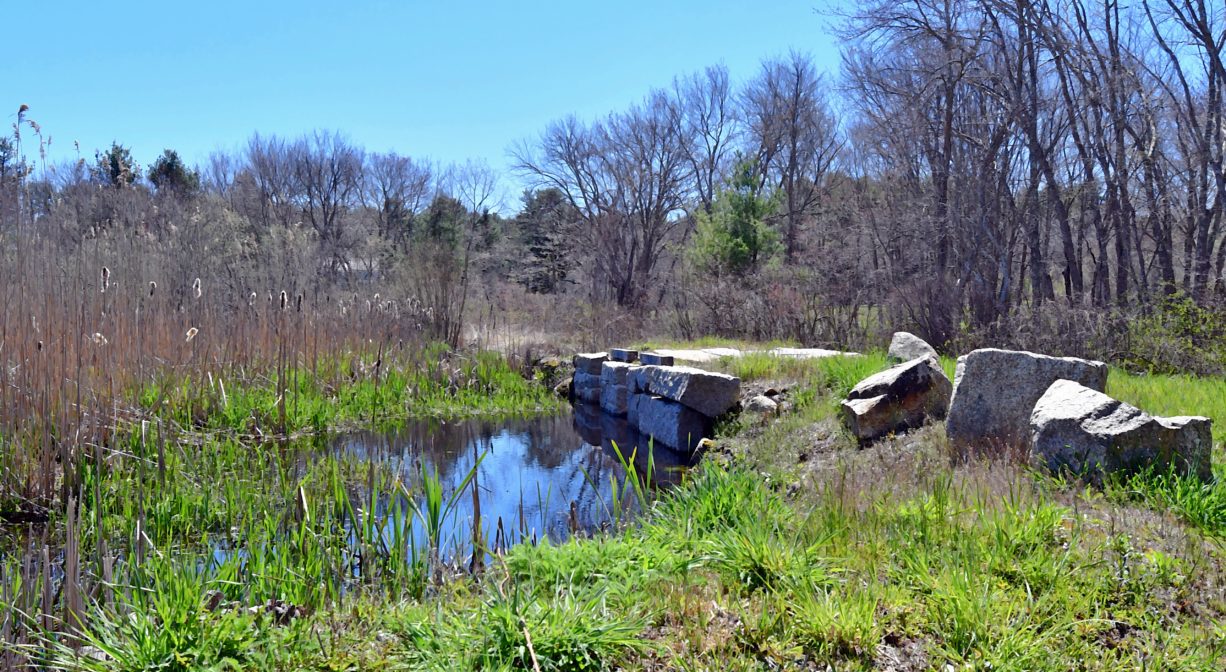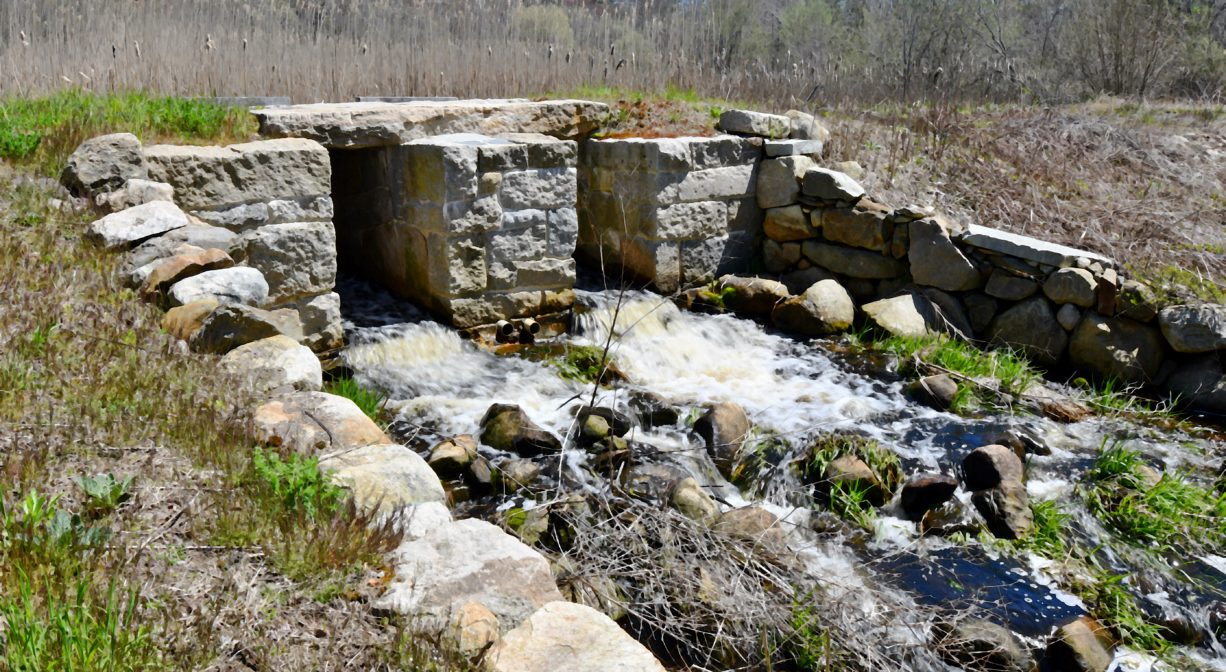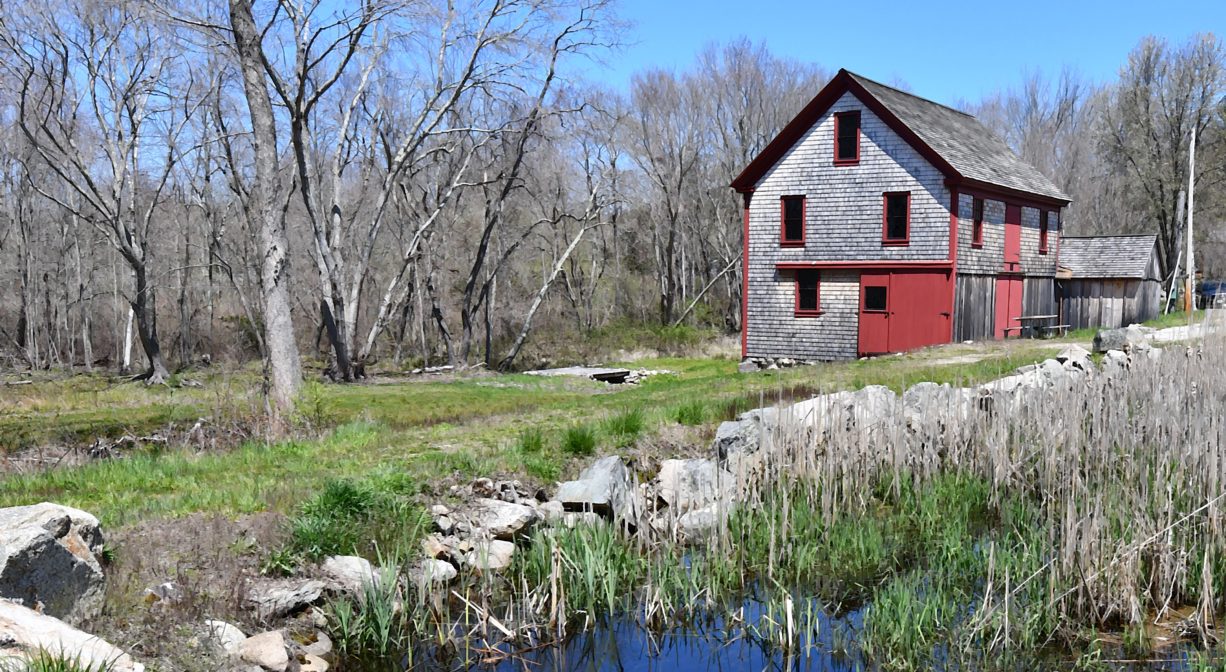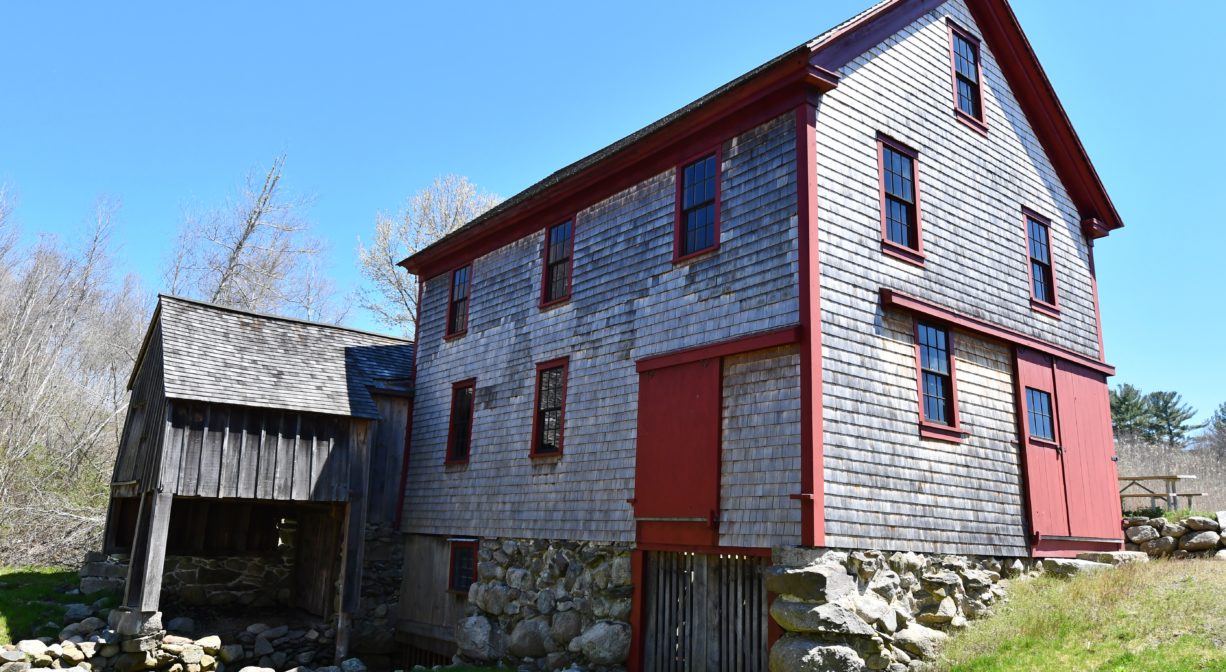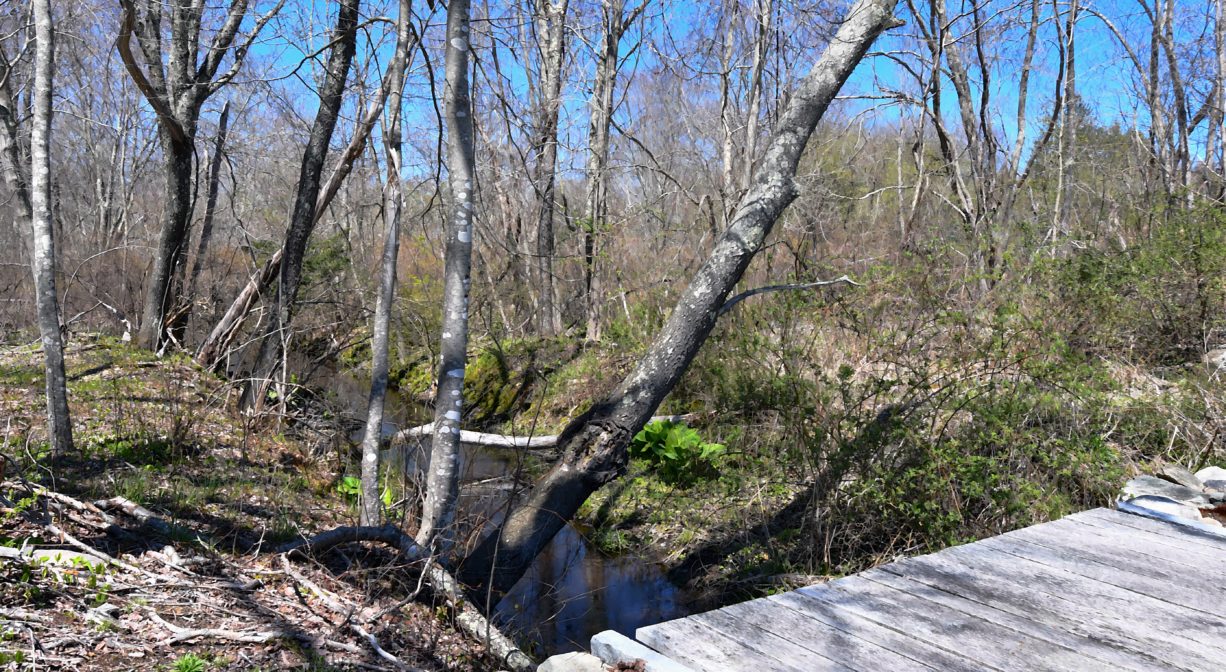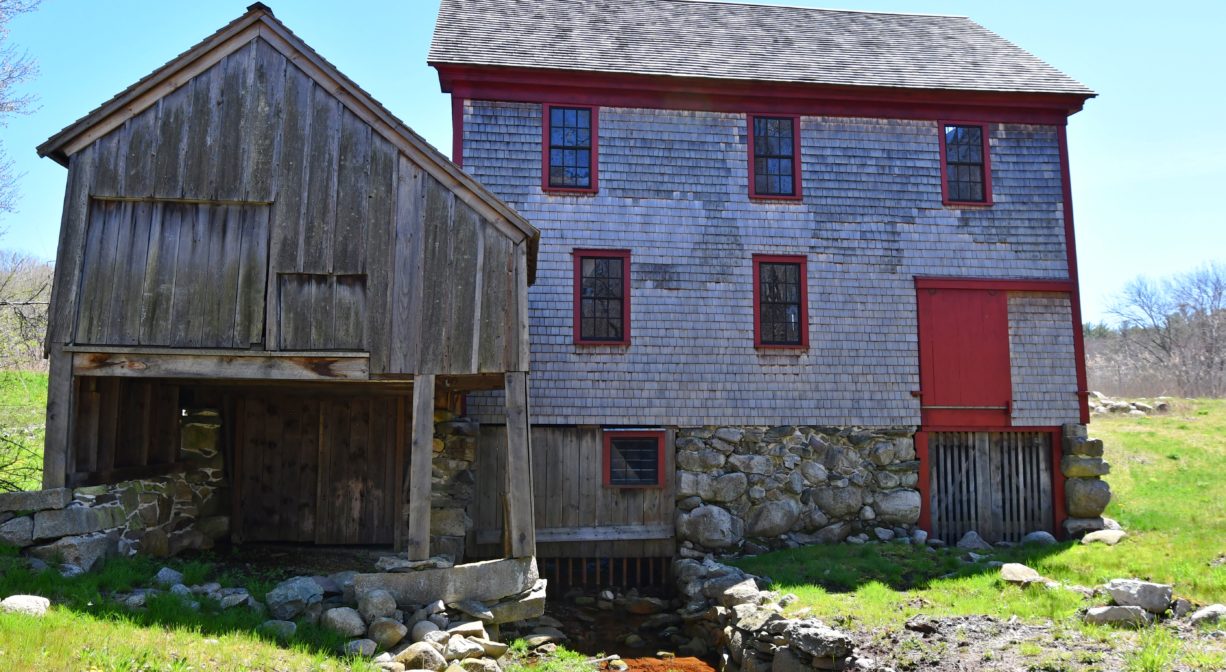Extension, Pine St, Marshfield, MA 02050, USA
http://hatchmill.com/index.php
Owned By: Town of Marshfield
Hatch Mill in Marshfield is the last remaining water-powered mill on Two Mile Brook, which flows into the North River. Located on Hatch Pond, it is open to the public and offers tours a few times a year.
Hunting is not permitted on this property.
Features
According to Marshfield: A Town of Villages 1640-1990 by Cynthia Hagar Krusell and Betty Magoun Bates, numerous mills were established on Two Mile Brook through the years. The brook was dammed in 4 places, creating ponds that sometimes fueled two mills at the same time. These included grist mills, carding and fulling mills, sawmills, shingle mills and boxboard mills. Members of the Hatch family operated the Hatch Mill for over 150 years. The Hatch family home, known as the Red House, is close-by.
Various published histories of the Hatch Mill offer sometimes-conflicting information. The history below is based on Robin Mitchell of Marshfield’s recent (2023) research. Primary sources were a notebook written by Ida Gertrude Hatch c. 1925, and a 1968 interview with Decker Hatch by the Marshfield Historical Society.
In 1752, Israel Hatch constructed a grist mill on this site. In 1812, Deacon Joel Hatch added a single-story long-log sawmill. The grist mill operated until 1859 and then it was moved to the property of Marcellus Hatch (381 Union Street) and used as a carriage shed.
In 1859, Samuel Franklin Hatch constructed a short-log (or boxboard) sawmill on the foundation of the original grist mill. In 1872, he updated the water wheel to a turbine and updated the up-and-down saw to a circular saw.
Franklin Decker Hatch acquired the mill in 1912, and operated it until his retirement in 1965. He was the last of the Hatch Family to operate the mill. According to Krusell and Bates, in the early 1900s, he and his assistants would employ a team of horses to haul pine logs from woodlots on Pine Street, cut them into slabs at the mill, and then deliver them to the Welch Company in Scituate.
The mill was initially sold to an individual, who in 1968 sold it to the Marshfield Historical Society. Next it was sold to the Hatch Mill Restoration and Preservation Group, known today as The Hatch Mill Group, Inc.
According to the Hatch Mill website, “the late Roy Kirby and his partners, Jack and Bob Clancy, bought the 3.5 acre property from the town historical society for $1, with the condition that they would take over the $40,000 mortgage, restore the mill and leave the land undeveloped. Over the years many other residents and craftsmen joined the project including preservation carpenters from North Bennet Street School, expert preservationist Michael Burrey of Plymouth who also worked on Plimoth Plantation, Rondout Woodworking of New York, and even students in the Building and Construction elective program at Marshfield High School.”
Major structural and exterior repairs were completed in 2016, saving the building from near collapse. The Historic Hatch Mill Group Inc has now undertaken a project to re-mechanize the mill and restore the pond, thanks to a grant from the Massachusetts Cultural Facilities Fund.
The Hatch Mill is listed on the National Register of Historic Places. Restoration continues.
This land is within the region of the Massachusett (or Massachuseuk). To learn more about local Native American tribes, we encourage you to interact with their members. The Massachusett tribe at Ponkapoag and the Mattakeeset band of the Massachusett share information on their websites.
Trail Description
A short trail leads past the mill building to a spot where you can view Two Mile Brook as it exits Hatch Pond and continues toward Mounce Pond and the North River.
Habitats and Wildlife
This grassy property is dotted with birch, oak and maple trees. Invasive phragmites have crowded out native grasses around Hatch Pond.
Two Mile Brook springs from Cooper’s Pond, off School and Forest Streets, and flows through three manmade mill ponds (Clark, Magoun, and Oakman) before it arrives on this property. Beyond the Hatch Mill, it flows through one more mill pond (Mounce) before emptying in to the North River.
The North River rises from marshes and springs in Weymouth, Rockland and Hanson. It is approximately 10 miles in length, with its source at the confluence of the Indian Head River (Hanover) and Herring Brook (Pembroke). From there it flows through the towns of Hanover, Pembroke, Marshfield, Norwell, and Scituate to the Atlantic Ocean between Third and Fourth Cliffs, draining approximately 59,000 acres along the way.
Historic Site: Yes
Park: No
Beach: No
Boat Launch: No
Lifeguards: No
Size: 3.5 acres
Hours: Open occasionally for tours.
Parking: Limited on-site parking near 381 Union Street. Address is "Pine Street Extension, Marshfield."
Facilities:
Picnic tables.
Dogs: No
Boat Ramp: No
ADA Access: No
Scenic Views: Yes
Waterbody/Watershed: Two Mile Brook (North River watershed)


